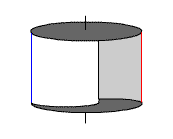Difference between revisions of "User talk:DM8954/Wave Propulsion Louvers"
| Line 26: | Line 26: | ||
Replace the fins with louvered panels and that's exactly what I was picturing. It would improve the efficiency of the design, but it would take some testing to know if it could even match current designs. --[[User:DM8954|DM8954]] 01:26, 24 March 2009 (UTC) | Replace the fins with louvered panels and that's exactly what I was picturing. It would improve the efficiency of the design, but it would take some testing to know if it could even match current designs. --[[User:DM8954|DM8954]] 01:26, 24 March 2009 (UTC) | ||
| + | |||
| + | With louvered panels it would be a panemone under water. I think it's a great idea for both propulsion and harvesting wave power. As usual, [http://www.youtube.com/watch?v=NXKIWUNtb6M somenone] has filed a patent for something similar. | ||
| + | |||
| + | I'm looking for a cheap pump to turn the rotation into water pressure so the energy could easily be concentrated using tubes to pressurize an air tank that can store a lot of energy. From there to electricity, using an [http://en.wikipedia.org/wiki/Compressed_air_engine compressed air engine] and a generator. The energy can in turn be used for propulsion, of course. Don't forget about your note. [[User:Joep|Joep]] 01:56, 24 March 2009 (UTC) | ||
Revision as of 01:56, 24 March 2009
Hi DM8954,
Waves are actually quite fast; see this. Given enough time the waves accelerate to wind speed. The example calculating 56 km/h (35 mph) doesn't seem absurd, and that's pretty fast for a large structure.
Btw, couldn't the same system be used to capture wave energy by creating windmills where the blades use louvers to only be affected by water in the right direction? (See also Panemone) Joep 18:48, 23 March 2009 (UTC)
When I mentioned that top speed would always be less than wave speed, I was actually thinking along the same lines as the fact that waves can eventually match wind speed. It does take a certain amount of time for full wind speed to be achieved by the waves. Between drag, the weight of the structure being propelled, and the time it would take to move with the wave (in the same way waves catch up to the wind) conditions could very well change before a large structure could match wave speed ...unless wave speed decreases after we've nearly caught up to a faster wave, in which case, we might be able to maintain the new lower speed.
Lets say, for the sake of estimating, that the device is only 75% efficient in a given period of time. You could only move 26mph into 35mph headwinds... but that wind would also resist the overall movement of the structure, further reducing your speed based on the drag of the part of the structure above water. A sizable system could probably move you 25%-50% of wind speed into the wind. (unless you've got slow waves and the wind only just picked up) Even so, working with the wind, you could achieve some pretty decent speeds, even if wave speed (like light speed) is the absolute speed limit of the system. Admittedly, though I never officially claimed wave speed as fast or slow, this is faster than I expected. Even 10% efficiency exceeds Vincecate's minimum speed for his Migration Plan.
That's a great Idea for power generation. Really, the same idea could be adapted right back to a wind turbine mode, rather than just waves... oh, that's called a panemone. haha. Thanks for the link.
I still have one more adaptation of louvers that I keep forgetting to add here. Maybe this note will remind me. --DM8954 22:00, 23 March 2009 (UTC)
Here's one without moving parts, looking pretty familiar :) 
(found it's called Savonius wind turbine) This one probably has very low efficiency, but it looks cheap enough to compensate for that. Joep 22:19, 23 March 2009 (UTC)
Replace the fins with louvered panels and that's exactly what I was picturing. It would improve the efficiency of the design, but it would take some testing to know if it could even match current designs. --DM8954 01:26, 24 March 2009 (UTC)
With louvered panels it would be a panemone under water. I think it's a great idea for both propulsion and harvesting wave power. As usual, somenone has filed a patent for something similar.
I'm looking for a cheap pump to turn the rotation into water pressure so the energy could easily be concentrated using tubes to pressurize an air tank that can store a lot of energy. From there to electricity, using an compressed air engine and a generator. The energy can in turn be used for propulsion, of course. Don't forget about your note. Joep 01:56, 24 March 2009 (UTC)